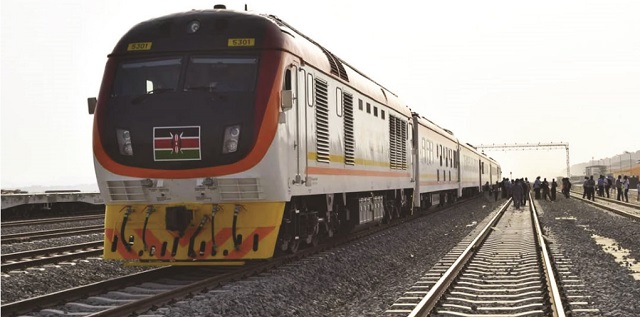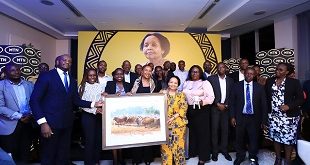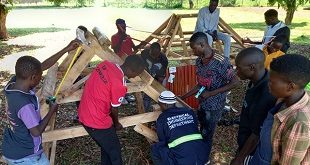
Kenya-Uganda in final discussions with Chinese bank
The Uganda government, which plans to start construction of a multi-billion dollar rail project to Kenya, has to wait until its neighbour agrees to extend the railway line to the border at Malaba for the financier to avail the funds, according to the Standard Gauge Railway Project Coordinator, Kasingye Kyamugambi.
Kyamugambi told journalists in Kampala on June 02 that China’s Import –Export Bank is willing to fund the US$2.3bn (Shs 8.13 trillion) rail project upon receipt of assurance that Kenya will extend the track from Kisumu to Malaba.
“Uganda applied for the loan about 18 months ago. We have been negotiating and made all the necessary requirements. The only issue remaining is us and Kenya to have a date of completing the railway line and the funds are availed,” he said.
He said the only condition yet to be met as spelled out by the financier is to ensure that once the construction of Naivasha-Kisumu rail is ongoing, Kenya will also start working on the Kisumu-Malaba route.
This is to ensure that the new rail snakes through Kenya to the neighbouring states in the region and thus generate revenues for recovery of the loan, which will be paid in 20 years, with a five-year grace period.
“The two countries are now engaged in negotiation with the bank to agree on the exact month that the Kisumu-Malaba-Kampala railway route will be completed. The heads of state are working on this and we hope the project will commence soon like in September,” he said.
The Malaba-Kampala route is expected to be completed in 42 months. John Holland, a subsidiary of China Herbor Engineering Company based in Australia, will run the railway line for 5-10 years before returning it to the east African governments.
China’s Exim Bank is expected to provide 85% of the funding required for the construction of the railway line to Kampala.
China’s reluctance to issue Uganda a loan could be originating from the fact that Kenya has on a number of occasions threatened to stop constructing the railway line in Kisumu after Rwanda indicated that it would construct its SGR via Tanzania.
Like the rest of the east African countries, Uganda is currently involved in rail infrastructure to provide conducive investment climate to attract large foreign direct investments especially in heavy industries and services.
The rail network is also expected to reduce transport costs from Mombasa to Kampala by a third as well reduce the travel times from 10 to one day.
The extension of the 273 km SGR line from Malaba to Kampala will form part of the new rail network that is expected to be extended to Kigali, Rwanda, Juba, South Sudan, Addis Ababa, Ethiopia, and Vurra to the Democratic Republic of Congo.
Construction of the 120km Nairobi-Naivasha standard gauge railway is already on course after Kenya secured Ksh Sh155.5 billion from the Exim Bank of China last month.
On May 30, the east African unveiled the first leg of the rail line linking the port of Mombasa and Nairobi. The railway line, which covers 472km, cost$3.2bn (Shs 11.32trillion).
Uganda’s move to construct a railway line linking Mombasa Port rather than using railway line in Tanzania and eventually water through Port of Dar es Salaam to Port Bell in Kampala was based on the fact that Kenya’s exports to the country are estimated at about US$1bn and imports millions of tonnes of various products through the Northern Corridor, according to the studies conducted by the government.
Cargo capacity was another issue in that each wagon vessel carried 44 containers yet a train carries up to 215 containers.
“For the Malaba-Kampala SGR, up to 40 trains can be operated in a day transporting 8,460 containers. If such amount of cargo was going to be transported on the lake, assuming that a massive of five wagon ferries purchased, we would require 40 days to evacuate cargo of one train. This means that the route is not viable,” says the study in part.
This coupled with the fact that oil products could not be transported on fresh water lake, made Dar es Salaam – Mwanza – Kampala route to be the only a minor alternative to the Mombasa-Kampala route.
Bad news for RVR
While the completion of SGR in the region is expected to be expected to drop the cost of transport in the region, it is likely to push Rift Valley Railways out of business.
For instance, in Kenya, the SGR train service said it will charge shippers about Shs238 per tonne per kilometre, a similar pricing expected to be extended to Kampala, compared to the RVR’s current rate of Shs812.
The initial average cost of shipping a standard 20-foot container from Mombasa to Nairobi by SGR train has been set at Shs1.7million which is said to be significantly lower than RVR’s cost.
Though RVR would not publicly state its rates , a 2013 survey conducted jointly by the Shippers Council of Eastern Africa and Trade Mark East Africa showed the RVR charged Shs2.2milllion for a 20-foot container of less than 14 metric tonnes, Shs2.7million for medium and Shs5million for heavy containers. The RVR has a 25-year concession to ferry goods between Mombasa and Kampala.
****
 The Independent Uganda: You get the Truth we Pay the Price
The Independent Uganda: You get the Truth we Pay the Price



One day from Mombasa to Kampala? Have they factored customs and border bureaucracy at Malaba ?